On May 17, 2023, the Chilean Congress approved a new mining royalty tax, which replaces the existing specific mining activity tax and introduces a new ad valorem component for big-sized mining operators, maintaining to a large extent what was regulated in the existing law about the mining operating margin. It also includes a maximum tax burden limitation.
I. THE NEW MINING ROYALTY TAX
The new royalty tax is structured under two main components: (i) an ad valorem component, applicable only to big-sized mining operations; and (ii) a mining operating margin component. The applicability of the different components of the royalty, its taxable base and its rates will mainly depend on the Metric Tons of Fine Copper (“MTFC”) annually sold by each operator.
1.Big-sized Mining Operators
i.e., those with annual sales that are higher than the equivalent value of 50,000 MTFC, considering average annual sales for the last 6 fiscal years (current rules only took into account the taxed year).
1.1 Ad valorem component equivalent to 1% on the annual copper sales, including qualifying sales made by related parties.
However, if an operator has a negative mining operational taxable income, this component would be reduced in the amount of such negative value.
This ad valorem portion is one of the two the main changes of this bill. The previous version of the royalty did not have an ad valorem component in addition to the mining operating margin component. Most of the additional changes in this bill (e.g., imposing a maximum tax burden limitation) derive from the political compromise reached to pass this ad valorem component of the royalty.
1.2 Mining operating margin component equivalent to an additional progressive tax rate to be applied on the mining operational taxable income. The rate of this component will depend on whether the operator’s percentage of copper sales exceeds 50% of its total sales, including qualifying sales made by related parties.
(i)Mining operators whose copper sales are more than 50% of their total sales: are subject to a rate based on the mining operating margin (i.e., taxable mining income over gross sales) of each company, ranging from a minimum rate of 8% reaching to a maximum effective average rate (i.e., after applying the progressive rates of each bracket) of 26%.
This new set of tax rates for mining operators that are mainly copper sellers is the second main change in the new royalty rules. The net result of this addition is that these mining operators will be subject to higher tax rates than they previously were. Additionally, the increase of those rates along with the mining operating margin will be faster than with the previous regime. Therefore, they will reach the top tax brackets faster than under the current royalty rules.
(ii)Mining operators whose copper sales are less than 50% of their total sales: will be subject to a rate based on the mining operating margin of each operator, ranging from 5% to 34,5%, with a maximum average rate of 14%. These rates are the same that apply on the current legislation to every mining operator selling more than the equivalent of 50.000 MTFC, regardless of the composition of those sales.
2. Medium-sized Mining Operators
i.e., those with annual sales higher than the equivalent value of 12,000 MTFC and do not exceed the equivalent value of 50,000 MTFC would be subject to a progressive rate between 0.4% and 4.4%.
3. Small-sized Mining Operators
i.e., those annual sales that do not exceed the equivalent value of 12,000 MTFC, would be exempt from the tax. This exemption is not changed when compared with the current rules.
II. MAXIMUM TAX BURDEN LIMITATION
Part of the political compromise reached to pass the amendments to the royalty regime was to set a limit to the tax burden imposed on a mining business. This limit is measured from the perspective of a theoretical shareholder that is taxed at a 35% rate on profits received from the mining company.
The maximum potential tax burden is set at 46.5% of the net mining operational taxable income. This limit considers the (a) mining royalty tax (including both components) and (b) income taxes, that is corporate income tax (27%) and potential shareholder’s taxation on dividends (35%). If the aggregate of these taxes exceeds the burden cap, the royalty tax shall be reduced correspondingly.
For mining operators with sales for an equivalent up to 80,000 MTFC (considering the average sales of the last 6 years), the maximum potential tax burden will be 45.5%.
III. AUDITED FINANCIAL STATEMENTS
Mining operators subject to the royalty tax shall annually submit audited financial statements to the Comisión para el Mercado Financiero (Chilean Securities and Banking authority).
IV. EFFECTIVE DATE
The new tax will enter into force on January 1, 2024. For mining operators benefited by tax invariability regimes, the new tax will apply on the individual date of termination of such regimes.
V. NEW FUNDS FOR THE BENEFIT OF LOCAL COMMUNITIES
Three new public funds are created for regional productivity and development, and for vulnerable and mining territories.










